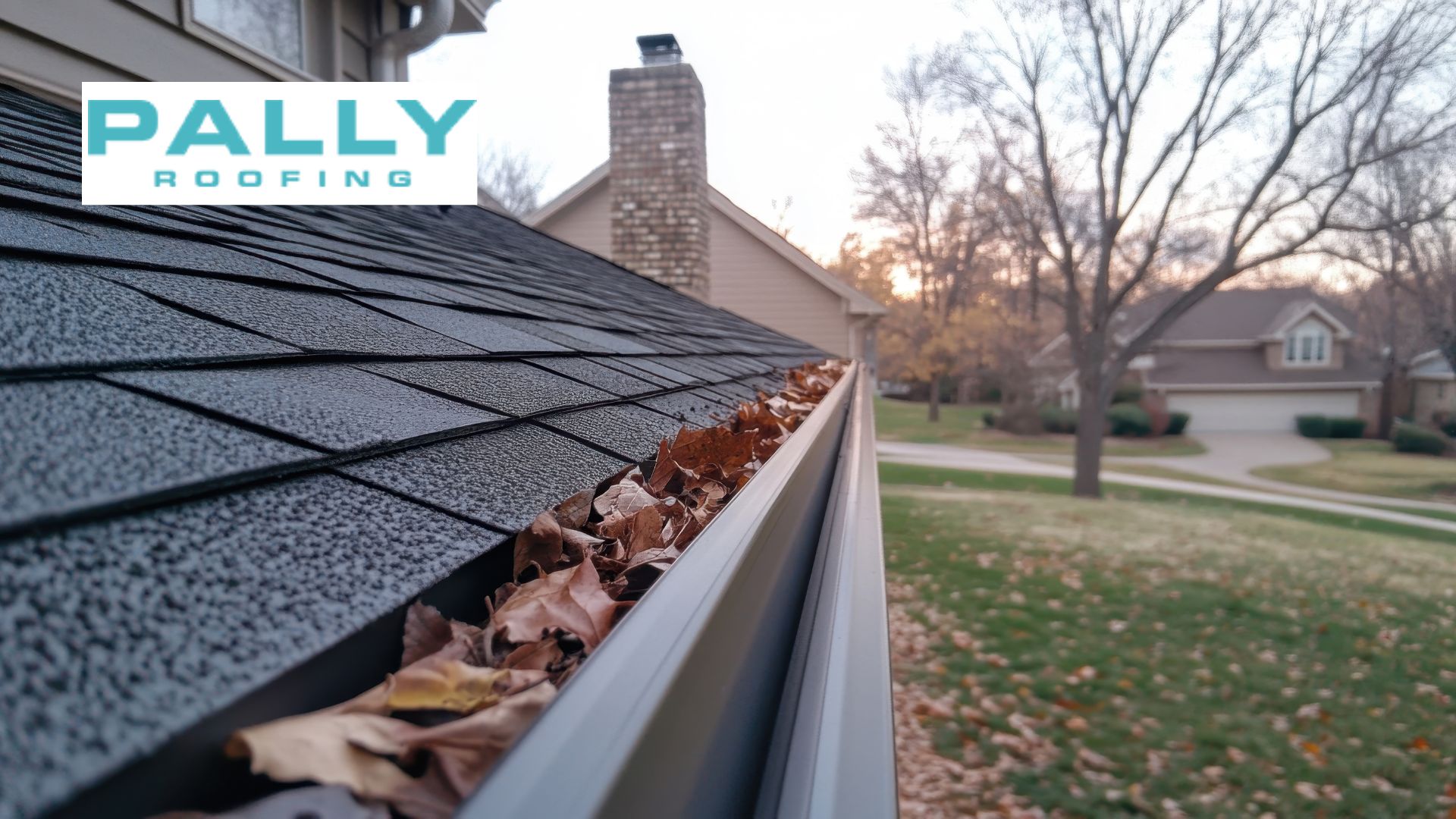Last updated on January 3rd, 2025 at 06:02 pm
Siding is an integral part of the exterior of any building, acting as a protective barrier from environmental factors such as rain, wind, and insects. Enhancing the property’s aesthetics, sustainability, and energy efficiency is important. Homeowners should pay attention to the common signs that indicate the need for siding replacement, such as cracks, rot, fading, and warping.
Table of Contents
For expert siding installation, repair, and replacement services in Garrettsville and nearby Ohio areas, visit our Siding Services Page to learn more about how we can enhance your home’s exterior.
Benefits of Siding Replacement
Replacing old siding comes with many benefits:
- Improved Curb Appeal: New siding for homes can make your home more attractive.
- Enhanced Protection: Protects from damaging weather, insects, and moisture.
- Energy Efficiency: Modern siding materials provide excellent insulation, reducing heating and cooling costs.
- Increased Property Value: Siding for a house can significantly increase your home’s resale value.
- Low Maintenance: Many modern siding options require minimal maintenance, saving homeowners time and money.
Types of Siding Materials

Source: media.angi
When considering siding replacement, homeowners have several options for siding for homes:
- Vinyl Siding: Affordable and versatile with low maintenance needs.
- Fiber Cement Siding: Durable, fire- and insect-resistant, mimics wood or stucco.
- Wood Siding: Keeps it classic but requires regular maintenance.
- Metal Siding: Modern, durable, and ideal for professional habits.
- Engineered Wood Siding: Combines aesthetics with increased rot and siding resistance.
- Brick and Stone Veneer: Improves your appearance while saving energy.
What Is The Best Siding Material For A Garage?
When considering siding for a garage, vinyl siding is often the preferred choice due to its affordability, durability, and low maintenance. Metal siding is another great option, especially if you want something more modern and weather-resistant.
What Are The Most Common Types Of House Siding Materials?
The most common types of house siding materials include vinyl siding, fiber cement siding, wood siding, metal siding, and engineered wood siding. Each material offers unique benefits, such as durability, low maintenance, and energy efficiency. For example, vinyl siding is cost-effective, while fiber cement siding offers superior protection against fire and pests.
Choosing the Right Siding for Your Home
Selecting the right siding for the house requires considering several factors:
- Climate Considerations: Different materials work best in different climates (cold, wet, or sunny).
- Budget Constraints: Costs vary widely, so it’s important to understand long-term value.
- Preferred decor: Choose colors and textures that match the home’s architecture.
- Durability and Maintenance: Assess the upkeep needs of different siding materials.
What Are The Most Durable Siding Materials For Extreme Weather Conditions?
Durability is a key factor when choosing siding materials for extreme weather. Here is a detailed list of sustainable options.
- Fiber Cement Siding: Resists excessive rain, wind, and extreme heat. It does not warp or crack and is fireproof.
- Vinyl Siding: High-quality vinyl siding is resistant to strong winds and water, making it ideal for humid climates.
- Metal Siding: Made of aluminum or steel and is corrosion-resistant, insect- and fire-resistant. The steel exterior is resistant to harsh weather conditions such as hail and strong winds.
- Engineered Wood Siding: The beauty of natural wood makes it durable and perfect for cooler environments.
- Brick and Stone Veneer: Very resistant to fire, insects, and extreme weather and provides excellent insulation.
- Stucco: A cement-based material that can withstand high winds and heavy rain when properly installed and maintained.
Summary: For homes in areas prone to extreme weather, fiber cement siding and metal siding are typically the best options due to their superior durability.
What Are The Best Siding Options For Homes In Cold Climates?
Vinyl and fiber cement siding are popular for homes in cold climates due to their excellent insulation properties and resistance to freezing temperatures. Fiber cement siding is particularly advantageous as it is not prone to warping or cracking in extreme cold.
Signs That Your Siding Needs Immediate Replacement
Several signs indicate the need for immediate siding replacement. Identifying these issues early helps prevent further damage. Check out these key signs:
- Cracks and Gaps: Visible cracks or cracks can allow water to seep in, causing water damage. If severe cracking occurs, it may need to be replaced.
- Rotting or Warping: The wood backing is prone to rot, while vinyl can warp when exposed to extreme temperatures. If you find these words, replace them.
- Fading or Discoloration: Fading can indicate aging or damage to the underside, especially on vinyl siding. If the color fades enough, it may need to be replaced.
- Mold and Mildew Growth: Mold or mildew indicates prolonged exposure to water. If the cleaning doesn’t help, consider an alternative to avoid further problems.
- Bubbling or Blistering: Bubbling on the surface indicates trapped moisture, leading to more severe problems. This warrants immediate replacement.
- Increased Energy Bills: If energy costs suddenly increase, your outdoor siding may need to provide more insulation. Replace them to increase performance.
- Pest Infestation: Moth-like insects make a siding on the house and indicate sideways movement. Replace damaged areas to prevent further attacks.
- Loose or Missing Panels: Loose screens can make your home vulnerable to water and insect damage. If they can’t be fixed, they need to be replaced.
Long-Term Cost Benefits of Replacing Old Siding
Replacing old siding offers great long-term savings:
- Increased Energy Efficiency: Choosing new siding for a home requires more maintenance than older materials, saving you money.
- Reduced Maintenance Costs: Newer siding for home options requires less upkeep than older materials, saving you money.
- Enhanced Property Value: New siding for houses improves curb appeal and increases the value of your home, often providing a 70-80% ROI at the time of sale.
- Prevention of Structural Damage: Replacing damaged vinyl siding prevents water intrusion, mold growth, and structural problems, saving you from expensive repairs.
- Insurance Benefits: Due to lower risk, durables can reduce homeowners’ insurance premiums.
- Durability and Longevity: Many modern products are designed to last, eliminating the need for future replacement.
- Tax Credits and Incentives: Some energy-efficient siding products are eligible for tax credits, lowering initial costs.
Summary: While siding replacement can be an expensive investment, long-term benefits—such as energy savings, reduced maintenance, and increased property values—provide it’s a smart investment decision.
The Cost of Siding Replacement

Source: images.ctfassets
Several factors influence siding replacement costs:
- Material choice
- Size of the property
- Labor costs
- Location
While quality siding materials can increase initial costs, they offer long-term savings through reduced maintenance and energy bills. Financing options may also be available for larger projects.
The Siding Replacement Process
The siding replacement process typically involves:
- Consultation and Assessment: A professional inspects your property and determines the best siding material.
- Material Selection: Choose the siding for a house that meets your aesthetic, durability, and budget needs.
- Preparation: Remove old siding and repair basements if necessary.
- Installation: New siding is installed with attention to detail for maximum durability.
- Final Inspection and Cleanup: Ensure everything is closed properly and the work area is clean.
Maintenance Tips for New Siding
To extend the lifespan of your new siding:
- Routine Cleaning: Clean house siding depending on the needs of the materials; clean the parts of your home to avoid sticking.
- Regular Inspections: Check for minor issues like cracks or loose wood before they become major problems.
- Painting and Sealing: Repaint the wood exterior or other surfaces as needed.
Siding Replacement and Home Energy Efficiency
Insulated siding for the house can greatly reduce energy loss, conserving heat and cooling. Homeowners may qualify for tax breaks or incentives for energy-efficient improvements.
Why Choose Pally Roofing For Siding Replacement?
With over 15 years of experience, Pally Roofing offers high-quality siding replacement services throughout Garrettsville and nearby Ohio. Here’s why homeowners should choose Pally Roofing:
- Customized Knowledge: We help you choose the best siding for your home based on style, weather, and budget.
- Durable Results: Our precision installation ensures your home is weatherproof and in great shape.
- Comprehensive Services: From inspection to post-installation maintenance, we handle every step.
- Energy-Efficient Solutions: We specialize in systems designed to reduce energy costs.
- Proven Track Record: Our name is built on hundreds of satisfied customers.
Conclusion
Replacing your siding is an investment in your home’s aesthetic appeal and long-term durability. With various siding options for your home, upgrading your exterior siding ensures your home is protected and energy-efficient.
Contact Pally Roofing today for professional siding replacement services in Garrettsville and nearby Ohio areas that deliver lasting value. For more information on vinyl siding for houses, check out our detailed Vinyl Siding Guide.
Frequently Asked Questions
How Much Does Siding Replacement Cost Per Square Foot?
The cost of siding replacement can vary depending on the material chosen. Siding materials can cost between $3 and $15 per square foot. It’s generally on the lower end for vinyl siding, while more premium materials like fiber cement siding and metal siding may cost more. The total cost will depend on the size of your home and the type of exterior siding you choose.
Can I Replace Just A Section Of Damaged Siding On My House?
Yes, replacing a piece of siding or a section of your siding on a house is possible if it's damaged. If the damage is isolated, you can replace just the affected siding panel or board. However, if the damage is widespread or the material is outdated, siding replacement for the entire home may be more cost-effective in the long run.
When Should I Replace The Siding On My House?
Signs that it’s time to replace the siding on the house include visible cracks, warping, fading, and mold growth. If you notice any of these issues, it’s best to consult a professional for an inspection. Siding replacement becomes urgent when the damage affects the structural integrity of your home, allowing water or pests to enter.
How Do I Replace Vinyl Siding In My House?
To replace vinyl siding, remove the damaged panels, using a pry bar to detach them from the house carefully. Then, ensure the wall underneath is in good condition before installing the new vinyl siding. Ensure the new panels align properly with the existing siding on the house, securing them with nails or clips.
How Do I Know When To Replace Vinyl Siding?
You may need to replace vinyl siding if it shows signs of cracking, warping, or discoloration. Other indicators include mold, mildew, and insect infestations. If vinyl siding becomes brittle or loses its ability to protect your home from the elements, it’s time for siding replacement.
How Do I Replace A Broken Piece Of Vinyl Siding?
To replace broken vinyl siding, loosen the lock with a pry bar or special siding tool and remove the damaged panel. Remove the broken side, align it with the existing panels, and install a new side, ensuring they are properly sealed. Ensure the new vinyl siding matches the style and color of the existing siding.
Author
-

With more than 16 years of hands-on experience, Phillip Schmucker is the knowledgeable owner of Pally Roofing. His dedication to superior roofing services has earned him a reputable place in the industry. Phillip also shares his extensive expertise through writing, providing readers with practical tips and professional advice on various roofing topics. Follow him on LinkedIn.
View all posts






